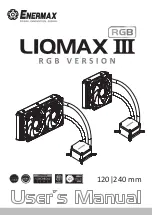
64
brICkwAll 2
Introduction
Do we need another Limiter?
Several golden ears in pro audio believe that the best
sound in pop/rock music generally was produced between
1982 and 1995. Despite higher resolution in converters
and DSP, lower jitter and probably a better overall
understanding of digital media, we seem to be on a
declining rather than inclining sound quality slope these
years; even though people buying records and film may not
be aware of it.
Obviously, there could be many reasons for this we cannot
directly influence: Trends, basic recording and microphone
placement skills, more semi-pro equipment being used,
shorter production times and therefore less attention to
detail etc.
The last couple of years, however, TC through papers
given at AES conventions has proven that at least one
good reason for trashy end listener and radio sound
exists: The abuse of loudness maximizers in mastering.
When levels get squashed against full scale, 0 dBFS,
reconstructed intersample peaks in DA and sample rate
converters may be considerable higher than the level
downstream equipment was designed to handle. We call
this level “0dBFS+”, and no current rules in mastering
prevents such peaks from happening.
The BrickWall limiter is designed:
1) to investigate if your signal is contaminated with
0dBFS+ peaks
2) to remove them
If you are concerned about audio quality at the end listener,
or have a desire to conserve talent, we believe you need
a limiter with these virtues. The BrickWall limiter cannot
prevent destruction of dynamic range from happening at
earlier stages in the production process, but it can get rid of
the signals we know are going to get distorted in consumer
CD players, radio processors or data reduction codecs.
Precision in Level and Time
The BrickWall limiter operates with extended precision
in both level (48 bit throughout) and time (5 times
oversampling). Double precision calculations are always
used, while hyper-precision in limiter timing can be turned
on or off using the
Upsample
key.
Level meters are always upsampled in order to identify
intersample and 0dBFS+ peaks on Inputs as well as
Outputs. The meter scale is extended to +3dBFS because
excessive level normally falls between 0 and +3dBFS,
and most consumer equipment already exhibits severe
distortion at +0.5 dBFS.
We recommend using the BrickWall limiter in Upsample
mode. However, if you wish to just limit the signal based on
sample by sample values like a normal digital limiter, the
function can be turned off. When turned off the limiter does
not protect against 0dBFS+ peaks from occurring.
Limiter Time constants
Limiter Time constants
Another important feature of Brickwall 2 is its adaptive time
constants. Several internal timing parameters and detection
variables are constantly updated to combat low frequency
distortion while maintaining quick adoption to occasional
peaks. Control is applied modeling analog dynamics
behavior in order to avoid introducing discontinuities and
out of band dirt to the signal.
Years of research into static, dynamic and 0 dBFS+
distortion in digital dynamics processing is built into
Brickwall 2 when Adaptive is activated. Therefore, the use
of Adaptive Profiles is recommended. If you turn off the
Adaptive setting, internal variables other than Release
Time will be fixed.
Absolute Bit Transparency
Whenever the BrickWall limiter is not attenuating the signal,
it is passed completely unaffected, transparent to the 24th
bit. Consequently, the BrickWall limiter may be used to
remove 0dBFS+ peaks on already mastered and finally
dithered material. When the Limiter is bit transparent, a
green indicator next to the Threshold control lights up.
Input and Output gain controls have 0.1dB increments, but
snap to bit shifts at 0, 6, 12, 18 and 24dB settings. When
a bit shift value is selected, a green indicator is lit on the
screen. Bit transparency from Input to Output is obtained
when Input Gain and Output Fader hit these values and
sum to 0dB, e.g. Input/Output 0/0dB, -6/+6 dB, -12/+12dB
etc.
Bit Pattern Transparency
When only bit shift gain settings are used on Input and
Output, bit patterns remain unchanged through the
algorithm, but can be shifted up (in the MSB direction) or
down (in the LSB direction) as desired. E.g. Input/Output
+6/0 (one up), 0/-12 (two down).
Linking
The two channels BrickWall limiters can be operated
independently or linked. If pronounced limiting is performed
on stereo material, linking should be considered to avoid
L/R image shifts. If only mild and occasional limiting is
being done, un-linked operation even on stereo material
may sound the best.
The Brickwall Limiter occupies:
@ Normal Sample Rate : 1/4 DSP Resource
@ Double Sample Rate : 1/4 DSP Resource
Algorithm Inputs/Outputs are distributed as follows:
E1 - E4
L
R
L
R
INPUT
OUTPUT
•
•
•
•
•
•
•
•
•
•
•
•
•
•
•
•
Содержание SYSTEM 6000 MKII
Страница 1: ...Algorithm manual English ...
Страница 2: ......
Страница 123: ......
Страница 124: ......
















































